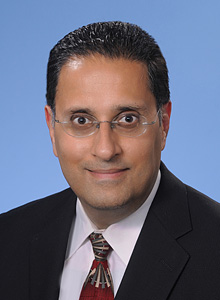This spring, researchers at the VA Hospital in Houston published a study revealing that one in 20 patients in outpatient settings are misdiagnosed
Publication of new peer-reviewed clinical studies indicates that, within the United States, more than 5% of outpatients—or 12 million people—are misdiagnosed annually. Few pathologists and clinical laboratory scientists would dispute this number because every day they see the best and the worst of how physicians use medical laboratory tests.
These findings were reported in a study published in the April edition of the British Medical Journal, BMJ Quality & Safety.
Study Looked at Medical Care in Outpatient Settings
The study’s goal was to focus on outpatient settings, where the researchers believe most diagnoses are made. In the abstract, the researchers wrote, “Data sources included two previous studies that used electronic triggers, or algorithms, to detect unusual patterns of return visits after an initial primary care visit or lack of follow-up of abnormal clinical findings related to colorectal cancer, both suggestive of diagnostic errors. A third study examined consecutive cases of lung cancer. In all three studies, diagnostic errors were confirmed through chart review and defined as missed opportunities to make a timely or correct diagnosis based on available evidence.”
Two aspects of care where of particular interest to the researchers as possible indicators of a missed diagnosis:
• Outpatients’ unexpected return visits to their doctors’ offices and;
• Lack of timely follow-up to abnormal clinical findings.
The Texas-based research team estimated the frequency of diagnostic errors, then applied that rate to the general adult population, according to a news release from the Agency for Healthcare Research and Quality (AHRQ), which partially funded the study .
Researchers Estimate That as Many As 12 Million Adults May Be Misdiagnosed
Researchers conducting the study found about 12 million U.S. adults, or one in 20 people, who visit doctors’ offices and other outpatient settings could annually be misdiagnosed, reported Reuters.
“It’s important to outline the fact that this is a problem,” said Dr. Hardeep Singh, M.D., Ph.D., the study’s lead author in an interview with Reuters
Hardeep is Chief of the Health Policy, Quality and Informatics Program at the Center for Innovations in Quality, Effectiveness and Safety at the Michael E. DeBakey Veterans Affairs Medical Center in Houston.
He further noted, “Because of the large number of outpatient visits, this is a huge vulnerability. This is a huge number and we need to do something about it.”

Pictured above is Hardeep Singh, M.D., Ph.D., the lead researcher and chief of the health policy, quality and informatics program at the Center for Innovations in Quality, Effectiveness and Safety. It is based at the Michael E. DeBakey Veterans Affairs Medical Center in Houston. (Photo copyright TBFI.)
Researchers estimate that half of all outpatient diagnostic errors addressed in the study may harm patients by delaying their treatment. One example is a delay in cancer care. Previous research by Singh also shed light on misdiagnoses and how they can lead to serious problems such as delayed cancer treatments, Reuters reported.
Another Study Finds Primary Care Diagnostic Flaws
In fact, Singh was also part of a 2013 study that suggested thousands of primary care patients risk receiving wrong diagnoses. His research team focused on the electronic health records at two healthcare facilities. They found 190 diagnostic errors.
A deeper look at the 190 people with diagnostic errors showed 36 had serious permanent damage and 27 died, according to JAMA Internal Medicine. In addition to cancer, researchers noted that other diseases likely to be misdiagnosed are pneumonia, heart failure, and kidney failure. Between 5% and 7% of these diseases were initially diagnosed as something else, noted this 2013 study.
“We have every reason to believe that diagnostic errors are a major public health problem,” observed David Newman-Toker, M.D., from the Johns Hopkins School of Medicine. “You’re really talking about at least 150,000 people per year, deaths or disabilities that are resulting from this problem.” He was quoted by Reuters Health.
Getting It Wrong in the ICU, Too
But primary care and outpatient settings are not the only healthcare venues where misdiagnoses have been noted. A team at Johns Hopkins Armstrong Institute for Patient Safety and Quality found in 2012 that 40,500 critically ill U.S. hospital patients annually die of unknown medical conditions that may have caused or contributed to death.
About 28% of patients had at least one missed diagnosis at death. And in 8% of patients the errors were so serious that it may have caused or contributed to death, according to the findings published online by BMJ Quality & Safety.
More Costs Associated with Wrong Diagnoses
Another source of data about the incidence and cost of misdiagnoses comes from medical malpractice settlements. For a 25-year period, an analysis of 350,000 claims determined that wrong diagnoses make up the bulk of U.S. malpractice payouts of $39 billion during this period, noted a U.S News Health story published last year.
It can be considered a positive sign that a steady flow of credible studies like the ones cited above are addressing the issue of misdiagnoses. Pathologists and medical laboratory scientists have the knowledge, skills, and experience necessary to provide effective clinical consultations with physicians and other providers in ways that can measurably reduce diagnostic errors in healthcare. However, it may require a change in how providers are reimbursed before more attention is paid to the existing rate of misdiagnoses, and deliberate actions are taken to address this problem.
—By Donna Marie Pocius
Related Information:
Outpatient Diagnostic Errors Affect 1 in 20 U.S. Adults, AHRQ Study Finds
About 12 million U.S. Outpatients Misdiagnosed Annually: Study
Misdiagnoses in Doctor’s Office Can do Harm: Study
‘Misdiagnosis’ Leading Cause of U.S. Malpractice Payouts: Study



